- Home
- Orhan Pamuk
The Innocence of Memories Page 9
The Innocence of Memories Read online
Page 9
GG: About the narrator, and about other things … It was all very well to have these interesting formal techniques to play with, but what’s going to make this film human? I liked what you said about Sans Soleil: ‘It’s a very interesting film, but if we make a film like this, there are going to be five people in the audience, and three of them will walk out.’
OP: I didn’t just love that film, I combed through it – I’d watch for ten seconds and then go off to google things for two hours, trying to understand, before resuming where I left off …
GG: So that’s what we were talking about: ‘How do we make the museum, Istanbul, and the novel into a movie?’ Right from the start you were understandably more concerned, more interested in how we were going to make this material into a movie. How do we make this a movie that people are going to enjoy?
OP: I was probably having one of my internal conflicts: I wanted to be extremely experimental, but I wanted people to enjoy my experimentality, two wishes which were contradictory by definition. But maybe we could find a solution. So we kept talking. We started filming on the streets we had walked on, and meanwhile continued to walk.
Making an experimental film like Sans Soleil is interesting in its own right, but we also wanted there to be some plot, a storyline, something like that. And we were also interested in the idea that the Museum of Innocence was both a novel and a museum, weren’t we?
Then you said, ‘Well, who’s going to tell the story? Who’s going to talk here? This is a documentary after all.’ The main characters from The Museum of Innocence, Kemal and Füsun, were already dead. So what were we going to do? Then one of us, I can’t remember which, had an idea.
GG: I think it was me.
OP: Ah yes, that’s what I was about to say. The secret’s out now!
GG: Thank you. So who was going to be the narrator? If you are going to do something formally experimental, then to have a single voice holding it together – a voice which is engaging – is very important. Generally, essay films – though not Sans Soleil – are narrated by men. Because of the kind of sexual politics explored in the museum and the novel, I thought it could be interesting to have a woman as the voice. Because … just, because. So, who’s this woman? I had really liked The Black Book – the detective story. So maybe there could be some kind of detective thing, this woman looking for traces of Füsun …
OP: Yes, although this idea is not so prominent in the movie because I was reluctant to go too much into the subject of Füsun’s apparent suicide. You had in mind someone coming along years later, researching Füsun’s death. Was it a suicide, or a death caused by societal pressures, as in Anna Karenina? Or had Kemal killed her? I don’t believe that, and in fact I never thought of going down that route. Meanwhile, we began developing a different idea, which ultimately led us to find Ayla.
Ayla is a secondary character in the novel. The novel has an index. If you have a copy of the book at home, you can check the index and you will see that Ayla is definitely in the story. We decided to use her, because Kemal is dead and Füsun is dead. And we mustn’t forget that Grant wanted to see today’s Istanbul, the Istanbul of the last fifteen years: high-rises, new buildings … Those of you who have seen the film will have noticed that its texture, its architectural Istanbul is not the Istanbul of my novel The Museum of Innocence, but a vision of today’s Istanbul. Grant wanted to do a film that was (a) partly about the Museum of Innocence, (b) on my work, (c) on Istanbul, and (d) on today’s Istanbul. I was supposed to come up with a solution. The solution was Ayla. These prescriptions also indicated what Ayla’s story should be. She would have had to leave Istanbul for a while, some time after the deaths of Füsun and Kemal, and be surprised upon her return by Istanbul’s immeasurable development over the last ten years: high-rises, everything being demolished, houses being destroyed. Grant wanted these things in the film too, so we invented Ayla.
GG: To be honest, Ayla was all his work.
OP: I must admit I was a little worried at this stage because I have always thought that the Istanbul of The Museum of Innocence is very close to the Istanbul of the sixties, seventies, eighties described in my autobiographical book Istanbul: Memories and the City – not to today’s Istanbul of high-rises. How was he going to make this work? While I kept dragging him into more historic neighbourhoods that dramatise and illustrate the city, Grant kept going to new neighbourhoods. I would think, ‘Don’t go there! What’s there to see?’
GG: What I knew as someone who had put together films before, working in my own singular way, was that as long as you’ve got the voice that does the work at the front, then all sorts of visual things can be going on in the background without conflict. So the voice can be talking about this and that while you’re walking underneath a subway bridge in 2005. As long as the voice is bringing everything together, you can go with the voice first, and the pictures will add an interesting harmony to it all. But the voice doesn’t always help. So once Orhan agreed to write the script, I had this idea that the voice should be Ayla’s. She goes away, she comes back again. This made me feel very free with the visuals, which is a great way to be.
OP: In a way I lived with Ayla, just like I had lived in My Name Is Red and Snow. I was also conscious that both of those novels have a character who is absent from Istanbul and returns after twelve years. Now, again, I had a character who comes back to Istanbul after twelve years. Ayla would return to her hometown after twelve years and, faced with its transformation, she would think, ‘My God, how it has changed!’ In My Name Is Red, the character Black (Kara) returns to the city and sees how much it has changed. In Snow too there is a character who is absent from Istanbul in a similar way. In both cases, it is for a period of twelve years. Ayla leaves Istanbul because her husband has some political problems, so they go to Bremen for a while, before coming back. Ayla is both startled and upset by the new high-rises, the development of new neighbourhoods.
Grant, I think you’ll want to talk about an important stage in our development of the film: the contract. The contract my agent and his agent concluded said, more or less, that Grant Gee is going to make a film based on Pamuk’s book and his vision of Istanbul. He would be free to quote from any of my books – he was particularly interested in The Black Book, Istanbul, and The Museum of Innocence – and he might edit these excerpts slightly to make them sound as if they came from Ayla’s mouth. Meanwhile, I would write a script of about thirty minutes, creating Ayla’s monologue. I also agreed to do a long interview with someone for Grant to use in the film. At that stage, having sorted out the contract and fulfilled my contractual duties – writing a new text, doing an interview, and helping Grant out whenever he came here, showing him around – I thought, ‘Well, it’s not my film, it’s his. God be with him.’
GG: Yes, the interview provided a really interesting angle on things. I was walking around Istanbul – if you’ve seen the film you know this – and what I didn’t want was to end up with an ordinary moving, poetic film about Istanbul because when you do that what you get is a full-screen talking head going blah blah blah, and it just flattens the whole film. The question is how to integrate talking-head material. It’s great stuff, the interview, but these days, especially when documentary filmmakers are trying to be more cinematic all the time, if you put in just the interview on a full screen, people think, ‘Eeeh, I’d rather watch TV, you know, why am I sitting here, why am I paying twenty euros to see this?’
Going back to the interview with Orhan: as I was walking around Istanbul late at night, thinking about this film, I saw that in all the shops here you have those little TVs always running in the back. And I thought, ‘Okay, this is interesting.’ I wondered if any of these guys watched arts programmes. And I asked Orhan if there was any Turkish arts programme that had done an interview with him. That would have been really good. And Orhan said there really were programmes like that, so I said, ‘Great, we’ll make one, too!’ It was really interesting. It didn’t all end up in the film
. It was actually a three-hour interview with Orhan in a studio with three cameras and the writer Emre Ayvaz. We even had a title sequence, end credits – in short, we made a proper programme. I can’t remember the name in Turkish, but in English it was ‘Witness’. Then we played the recording of the interview on TVs and filmed as we walked past them. That was how we managed to integrate the talking heads you find in conventional documentaries into our creative universe. It was a good solution.
OP: If I remember correctly, we weren’t always planning a ninety-minute feature film. But we ended up with a normal full-length film. Grant started off making a documentary that would be maybe forty minutes long. The people who were financing the film had intended it for TV. The idea that the film might end up screened in movie theatres, at the Venice Film Festival, the !f Festival, or some festival in Paris seemed only a flight of fancy. We weren’t really thinking along those lines; it was never in our plans. We were reluctant to even dream about it. The idea that we might actually make a full-length feature film only came later. But really we only set off thinking we’d make a modest documentary.
GG: It’s one way of making odd documentary films, slightly unconventional documentary films. It can be five minutes long, it can be ten minutes long, but you have to find something that can push and sustain you through the process. As it gets bigger, it only feels better. But whether you’re working for TV or for the internet, the basic impulse is to aspire to something good.
OP: We have come to the most interesting question, I think: what is an unconventional documentary?
GG: I don’t think there are any conventional documentaries left any more. I don’t know about here, but in England, as TV has become more purely entertainment-based, all those documentary filmmakers who used to make fifteen programmes for broadcast on the country’s main TV channels are now out of a job. So what they are forced to do now is to go to the people who finance films and say, ‘I have an idea for cinema: a documentary!’ We got our main funding from the British Film Institute. The first time we talked about this project with them, they said, ‘Until two years ago, we used to get 300 applications a year to make feature-length documentary films. Now we get 2,500.’ That’s because everybody now is saying, ‘My documentary is a movie.’ They have bigger production values, cute ideas, and more fiction is brought into it. It’s a way of getting your films made. So the lines between what is a fiction feature and what is a documentary feature are starting to get very blurred.
OP: This seems not unlike the developments in postmodernist history during the 1980s and 1990s. A good example may be Simon Schama, who was then a professor of art history at Harvard and doing historical research on some event in American history. He had done enough research to write an academic book in the classic sense. But Schama threw caution to the wind and wrote a novel instead. Bear in mind this was the era of high postmodernism. He took all his knowledge of social patterns and of the history of art, making little changes to certain details, but with a precision befitting a professor, and wrote Dead Certainties: Unwarranted Speculations, published in 1991. This was both a novel and the novelistic experiment of a respected historian. But I’m very curious to learn about what you’ve just said: to make an entertaining documentary, you must make it fictional.
GG: So we were at another meeting where the eventual producers told us they liked our idea, that they were interested in putting money into this film because, they said, ‘It is going to be a cinematic documentary, and when the 2,500 directors who are sending us their ideas ask “What do you mean, a cinematic documentary?”, we’ll be able to say, “Something like this.”’ I hadn’t realised Simon Schama had done that, and suddenly that’s opening up all sorts of things – I’m thinking of the anthropologist Marc Augé, who wrote a book that was really influential for filmmakers of my generation called Non-Places.
OP: I think the beginning of the whole thing was the surrealists’ relationship with anthropologists during the 1930s. The surrealists were influenced by anthropology and the social sciences, and some of these social scientists were using surrealism as a form of expression. But this was dangerous territory and things could easily slide into racism: the 1930s surrealists were inclined to approach the idea of natives/savages, which was a topic of anthropological investigation, from a racist, exoticising angle. Anyway, for a time, the social sciences went hand in hand with fiction, the creative arts, and surrealism. Your film is an example of this kind of thing. It is both a documentary and a work of fiction. Would you say that your film based on The Rings of Saturn was also like this?
GG: Yes.
OP: My answer would be: ‘In a visual sense, yes!’
GG: Yes, it was. But with Sebald, the fiction is in the way he overlays history onto what’s in front of his eyes. So his fiction is a combination of a real place and something half remembered, maybe something with an element of falsehood in it. This creates an uncanny atmosphere, which again goes back to surrealism, and so on.
OP: So you started shooting your movie. I was telling my close friends at this time, ‘Well, it’s his film, I won’t interfere.’ But at the same time I was betraying that statement by being curious, by trying to control the process … I saw you doing interviews with Türkan Şoray and Ara Güler, and becoming infatuated with the things you were discovering in Istanbul, and I got a bit upset. But maybe we can come to that later.
GG: Well, when the ‘talent’ – and in this case, drama is the talent, the lead actor – when the talent starts getting a bit jumpy about what the director is planning, the director has to draw on resources deep inside himself to keep the core of the film in his line of sight. I just knew that what I had in mind was the right thing to do. I would listen to Orhan’s objections, some of which were right, some of which weren’t, and I would think, ‘It’s okay, just keep going.’ It’s really difficult because you can collaborate with people, and talk to people every step of the way, but even people who work in the film industry, people I’ve been working with for years and years and years, know that when you are shooting and when you are editing a film, when it’s not been made yet, nobody actually knows what’s going on apart from the director. Even the editors right there with you don’t quite understand. And so all people have is their own taste, and their own fears and anxieties, that they project onto the thing. One of the hardest things about directing is when the people around you start getting anxious. This usually happens halfway through a shoot, or halfway through the edit. Everyone’s anxieties start raining down: ‘What is this? This isn’t what I thought it would be …’ and the like. Of course, you have to listen to what’s being said if it’s a genuine concern. But you always tell yourself, ‘I know this is going to work out okay.’
OP: Don’t worry, Grant. We had some stormy times, but our marriage has survived.
Anyway, while he was happy with his experimentalism, I was worried – about what was happening to my book, my life, my story at that time.
GG: I was filming Türkan Şoray around that time.
OP: Yes, Türkan Şoray especially. ‘Why is Türkan Şoray here?’ I would ask. ‘She’s in The Black Book, isn’t she?’ Grant would reply. Until finally, the film was finished.
I’m very happy with the film. I enjoyed watching it. I also think it’s an intellectual film. It’s a heavy, dense film. It’s not a popularised, sugar-coated version of my novel The Museum of Innocence. It’s a serious film, a film with its own visual universe. I’m proud that there is such a beautiful film based on my writing and, of course, on the director’s imagination. It’s Grant’s film completely. I only worked as a scriptwriter during its production.
GG: It’s one of those geeky cinephile and filmmaker things: it all goes back to the fact/fiction divide. What’s factual and what’s fictional filmmaking? I think it was probably Godard who said that ‘cinema comes from two sources’. One of the sources is Lumière – you know, the train arriving at the station without blocking off the camera, as if it were real. And then t
here is the Méliès source, Georges Méliès’ Le Voyage dans la lune. That is a twin birth in cinema. They are two completely different strands: the Lumière strand is pure objectivity, and Méliès is the visionary strand. That opposition, and the result of that twin birth, have never been clear.
OP: Where do we stand with regards to these strands?
GG: We are somewhere in-between. There has always been a line, a scale between those two things. You are never entirely Lumière or Méliès, you are always … any film is always somewhere on the line between those two points. Never purely one or the other. And that takes us back to the origins of cinema.
OP: I agree with you on this point.
You know, I’ve always wanted to see what goes on in a film studio, but of course it was impossible because you were working back home in England. All the material in a studio, all those buttons, screens, and control mechanisms, in my mind I’ve always pictured it like a cockpit. I’ve always thought that operating this technical equipment must be like piloting a plane. Could you tell us more about what you do in a studio?
GG: I mean, for the editing our blessing for the past fifteen years has been one piece of kit, which is Apple’s Final Cut Pro. And they don’t pay me to say that, I’ve always paid them, despite the fact that they have betrayed us so many times and have become something of a Big Brother.
It’s one piece of very good editing software. You have all these tracks, all these different layers. So that’s why we use this editing software. But whereas usually people have one track with two or four or six soundtracks, we must have had twenty-four audio tracks, and about eight layers of video stacked up. If you see a picture of the timeline – we always take photographs of the timeline when the project is completed – it looks like a city: all the tracks are stacked up like skyscrapers, rather than just a single line.

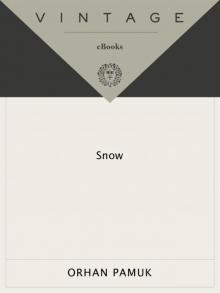 Snow
Snow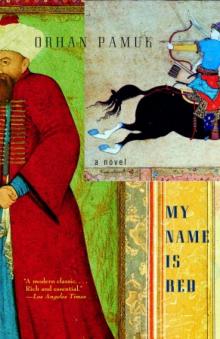 My Name is Red
My Name is Red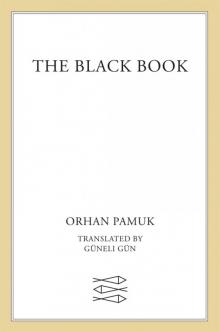 The Black Book
The Black Book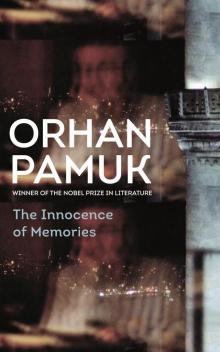 The Innocence of Memories
The Innocence of Memories The White Castle
The White Castle Other Colors
Other Colors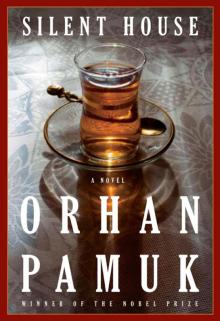 Silent House
Silent House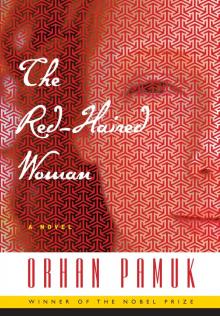 The Red-Haired Woman
The Red-Haired Woman The Museum of Innocence
The Museum of Innocence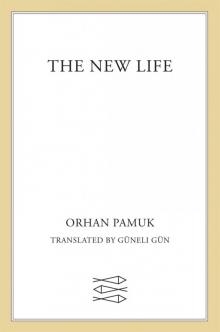 The New Life
The New Life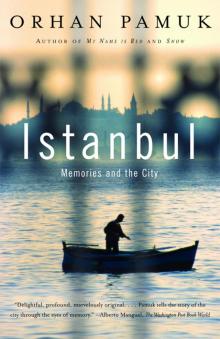 Istanbul
Istanbul